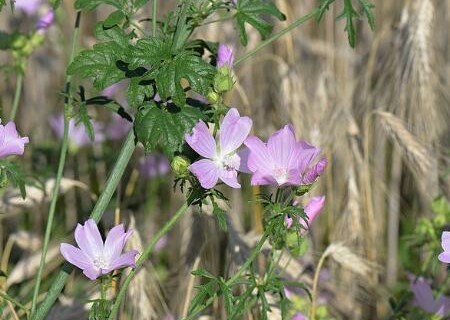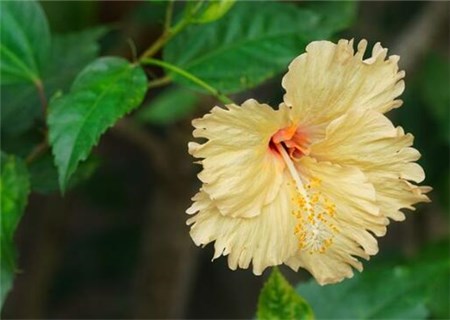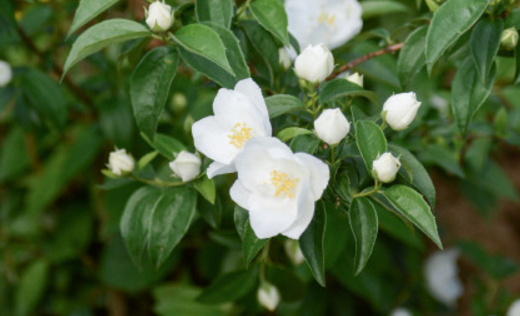How to raise hibiscus flowers in Malvaceae? What are the methods of breeding? What's the difference between Fusang flower and Fusang flower?
Hibiscus is a common shrub flower in the garden. It can be used as a flower hedge in the garden. It can be planted alone or in clusters. It is native to all provinces in central China and is cultivated everywhere. Do you know how to raise hibiscus flowers? What are the methods of breeding? What's the difference between Fusang and Fusang flowers?

First, how to raise hibiscus
1. Soil for hibiscus culture
Hibiscus is very adaptable to the soil, and the requirements for the soil are not strict. It can thrive even in barren gravel sandy soil or weakly alkaline soil. Of course, the fertile soil and loose environment are the most suitable for the growth of hibiscus.
2. How to water hibiscus
Hibiscus likes light and is tolerant to semi-shade. During the growing period, attention should be paid to providing sufficient light. The light should not be too strong, let alone exposure to the hot sun. The hot summer should be properly shaded, or moved into the room to avoid direct sunlight, resulting in the discoloration of its flower appearance.
3. the suitable temperature for the growth of hibiscus.
Hibiscus likes light, warmth and heat. Therefore, the warm growth environment is the most suitable for the growth of hibiscus, 18-25 ℃ is the best temperature for its growth, but also can be slightly cold-resistant.
4. How to apply fertilizer to hibiscus
When the hibiscus sprouts, it is necessary to apply topdressing in time, mainly with quick-acting fertilizer, which can promote the growth of nutrition. Before flowering and budding, 1-2 times of phosphorus and potassium fertilizer were added to promote the budding and flowering of hibiscus. The flowering period of hibiscus is from May to October every year. during this period, combined with weeding and soil cultivation, topdressing is applied twice to ensure the yield of hibiscus flowering and the growth of trees.
2. What are the breeding methods of hibiscus
1. Ramet: before the ramet germinated in early spring, the adult plants with vigorous growth were dug up and planted according to the plant and row spacing of 50 × 60 cm with 3 main branches as one clump.
2. Cutting: hibiscus cuttings can be combined with pruning and shaping from mid-March to early April. Open-air cutting in red soil or sandy soil is easy to survive when the temperature is between 17 ℃ and 20 ℃.
3. Sowing: the sowing and reproduction of hibiscus is carried out in April in spring. After the fruit matures in October, it is most suitable to collect seeds from November to December. After harvest, the seeds are stripped and stored at low temperature, and then sowed or sowed in April.
4. Striping: the transverse branch of the wood is very easy to take root, dig a shallow ditch next to the mother plant before germination in spring, press the one-year-old branch horizontally into the trench, cultivate the soil, keep the soil moist, and root and shoot quickly.
3. What's the difference between hibiscus flower and mulberry flower
1. The difference of height
Hibiscus can grow up to 4 meters tall.
Fusang can grow up to 3 meters high.
2. The difference of florescence
Hibiscus blossoms from July to October.
Fusang is in a state of flowering all year round.
3. Difference of producing area
Hibiscus originated from the African continent and is now planted in most parts of our country.
Fusang is originally produced in our country.
4. The difference of growth environment
Hibiscus is more adaptable to the growing environment than Fusang, and has a better defense against heat, cold, drought and shade. When planting in winter in the north, it is necessary to take cold protection measures, or directly moved to the indoor display. The demand for soil is lower than that of Fusang, and even malnourished or uneven soil can grow.
Fusang likes to be bathed in the sun all the time. It is very intolerant to shade, and its ability to protect against cold and drought is also very weak. The Yangtze River valley and places to the north are only suitable for planting Fusang in flowerpots. The growth temperature in winter should be maintained between 12 and 15 degrees Celsius. If the temperature falls below 5 degrees, it is easy to make its leaves turn yellow to wither, and below 0 degrees will affect its health. The requirement of soil is higher than that of hibiscus.
5. The difference between leaves
Hibiscus leaves tend to be rhombic, and the edge of the upper part of the leaf is irregular semicircle. The leaf is about 3 cm to 10 cm in length and 2 cm to 4 cm in width.
The leaves of Fusang are oval, but the two ends are pointed, and the edges of the leaves are irregularly serrated. The leaves are 4 cm to 9 cm long and 2.5 cm wide.
Time: 2019-03-16 Click:
- Prev

What are the planting methods of hibiscus flowers in hibiscus? What is the effect and effect? What does it symbolize?
Hibiscus flowers are suitable for planting in courtyards, slopes, roadsides, forest edges and in front of buildings, or as flower hedges, and can also be potted in the cold north. So do you know the planting methods of hibiscus flowers? What is the effect and effect? What does it symbolize? Hibiscus flower planting method, 1. Soil: hibiscus hibiscus is not strict with soil.
- Next

What is the breeding method of mountain plum blossom of Saxifragaceae? How do you breed? What's the value?
Mountain plum blossom has strong adaptability, like light, warm and cold-resistant and heat-resistant, so what is the breeding method of mountain plum blossom? How do you breed? What's the value? It is understood that the mountain plum flower has a relatively high adaptability, it likes light, like warmth, cold and heat resistance, but afraid of waterlogging. Prunus mume blossom does not have high requirements for soil.
Related
- Fuxing push coffee new agricultural production and marketing class: lack of small-scale processing plants
- Jujube rice field leisure farm deep ploughing Yilan for five years to create a space for organic food and play
- Nongyu Farm-A trial of organic papaya for brave women with advanced technology
- Four points for attention in the prevention and control of diseases and insect pests of edible fungi
- How to add nutrient solution to Edible Fungi
- Is there any good way to control edible fungus mites?
- Open Inoculation Technology of Edible Fungi
- Is there any clever way to use fertilizer for edible fungus in winter?
- What agents are used to kill the pathogens of edible fungi in the mushroom shed?
- Rapid drying of Edible Fungi

